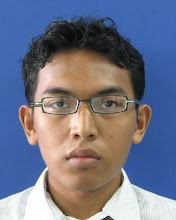Hong Ca Commune, Tran Yen District, Yen Bai Province, August 6, 2007. “It’s like a dream now”, Ha Giap Hung points to his new motorbike. He has brought it since the Ca Noc bridge was built over the violent stream in front of his house, in Hong Ca Commune, Tran Yen District, Yen Bai northern province.


 (Pic) Ha Giap Hung and his motorbike. Before, even if Hung had money, he could not buy it because there was no way to cross the rapid stream.
(Pic) Ha Giap Hung and his motorbike. Before, even if Hung had money, he could not buy it because there was no way to cross the rapid stream.
Whenever flashfloods came, Ha Giap Hung couldn’t do anything. His house is on one side of the stream, while his field is on the other. “I often had to stay on the other side and couldn’t get home, some times for few days,” Hung, a Tay ethnic minority man recalled.
Being in a rough terrain area, Hong Ca Commune is split into smaller areas by streams, hills and mountains. The commune was often isolated during flooding season.
“Now with my motorbike, I can go anywhere, anytime, thanks to the Ca Noc bridge” Hung adds. Being able to go to the field regularly, Hung earns more and could even afford a TV, radio and an electric pumps for his field work.
“Mr. Hung’s example shows that people can be better off with small investments tailored to the local needs. The World Bank can create opportunity and hope,” World Bank Group President Robert B. Zoellick said while visiting Hung’s family during his Asia trip.
Zoellick also called upon Ms. Ha Thi Tam, a local farmer whose electricity has changed her life.
“I now have an electric pump, which helps me with farming work. Currently I have 3000 m2 of farm land, but I plan to expand my field further”
Hung and Tam are just two of the 165,000 people from various ethnic groups in the province, including Mong, Tay, Dao, Thai and Kinh, have significantly been improved thanks to this project.
During his trip, Mr. Zoellick affirmed that the World Bank will continue to help the government in poverty reduction, which is reflected in recent Bank commitment to provide resources for the Program 135 Phase 2.
“Vietnam is a great development story from which many other developing countries can learn,” Mr. Zoellick said. “I want to listen to our stakeholders and learn how the Government has used the money and development expertise provided through the International Development Association (IDA).
It is one of the most powerful examples of how IDA works as a platform that supports the work of all donors and development partners.”
Zoellick visited a power station, built with support from the World Bank supportedSystem Efficiency Improvement, Equitization and Renewables Project. The station is a crucial middle point of the 220 kV link that transmit imported electricity from China to Vietnam's system.
Another World Bank supported project, the Vietnam Rural Electricity Project has extended the access to electricity for about 20,465 households in Yen Bai province alone.

(Pic) Electricity, with support from the World Bank, has reached far and remote areas like Hong Ca Commune.
Although Ha Thi Tam doesn’t know that the electricty grid in her commune was constructed under the Vietnam Rural Electricity Project, she knows exactly what electricity brings to her, and the future seems bright.
“I have a fan for the hot day, and a TV so that I know what’s going on, and the latest farming techniques.”
source : http://web.worldbank.org/WBSITE/EXTERNAL/COUNTRIES/EASTASIAPACIFICEXT/VIETNAMEXTN/0,,contentMDK:21436727~menuPK:387571~pagePK:2865066~piPK:2865079~theSitePK:387565,00.html









